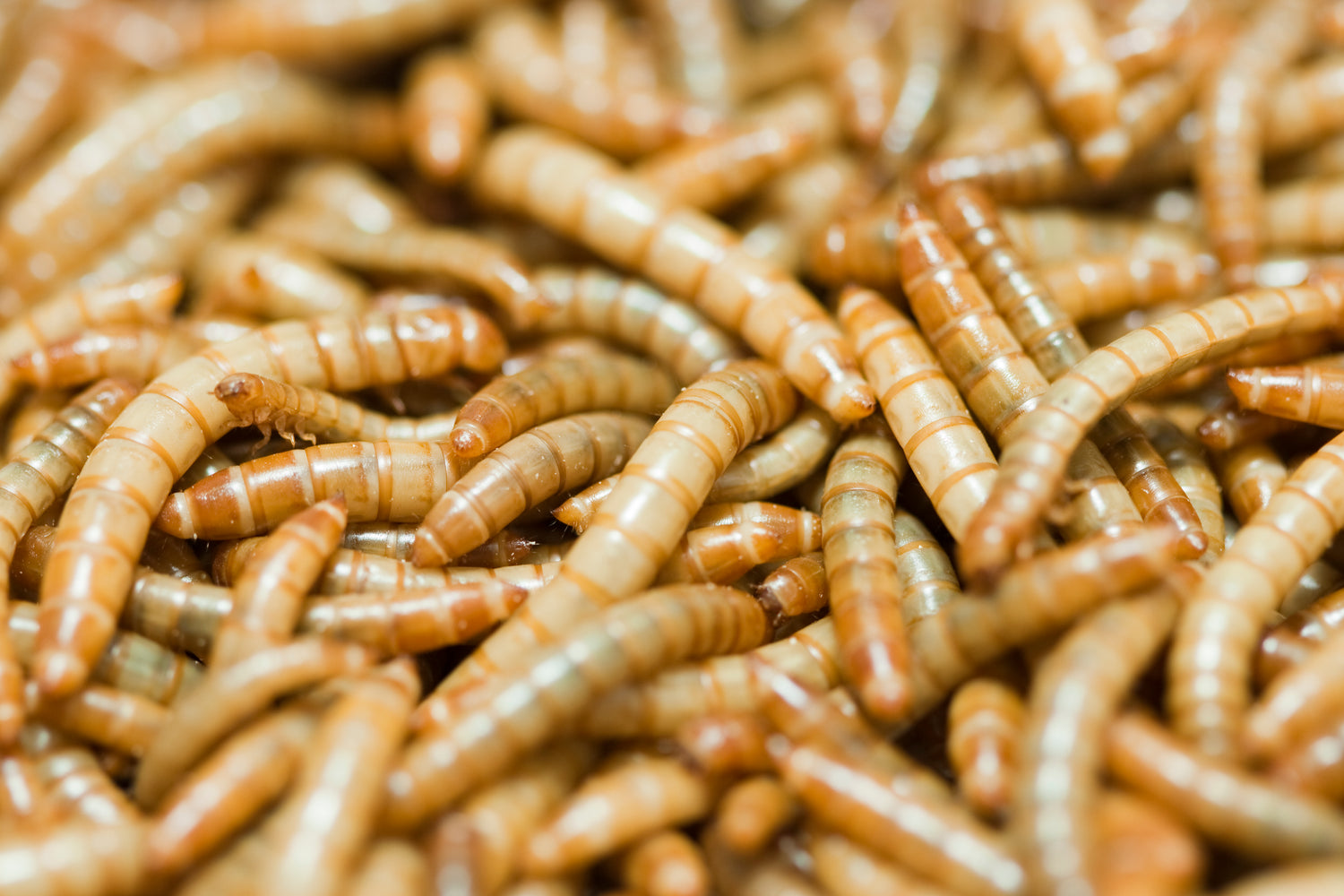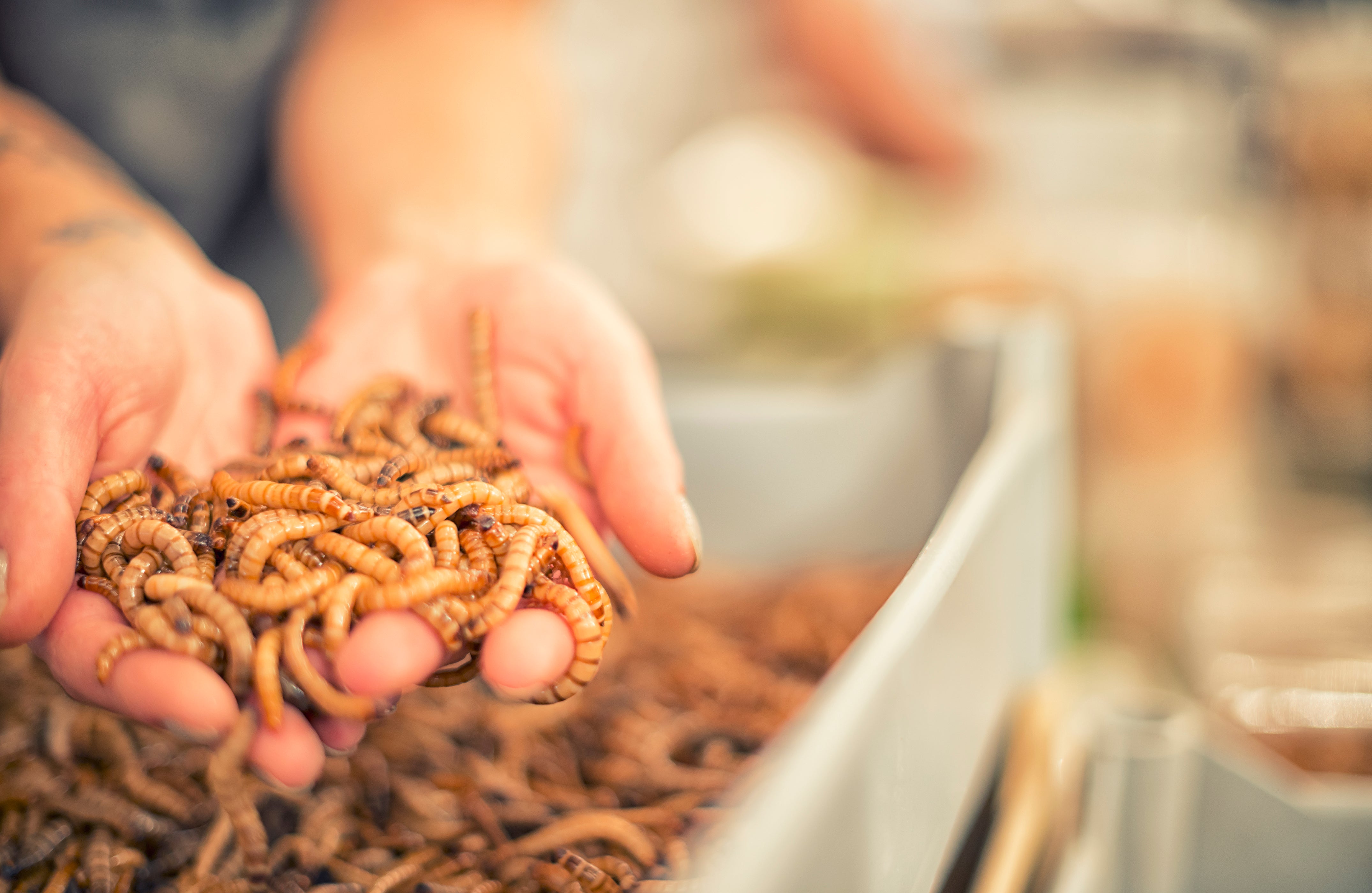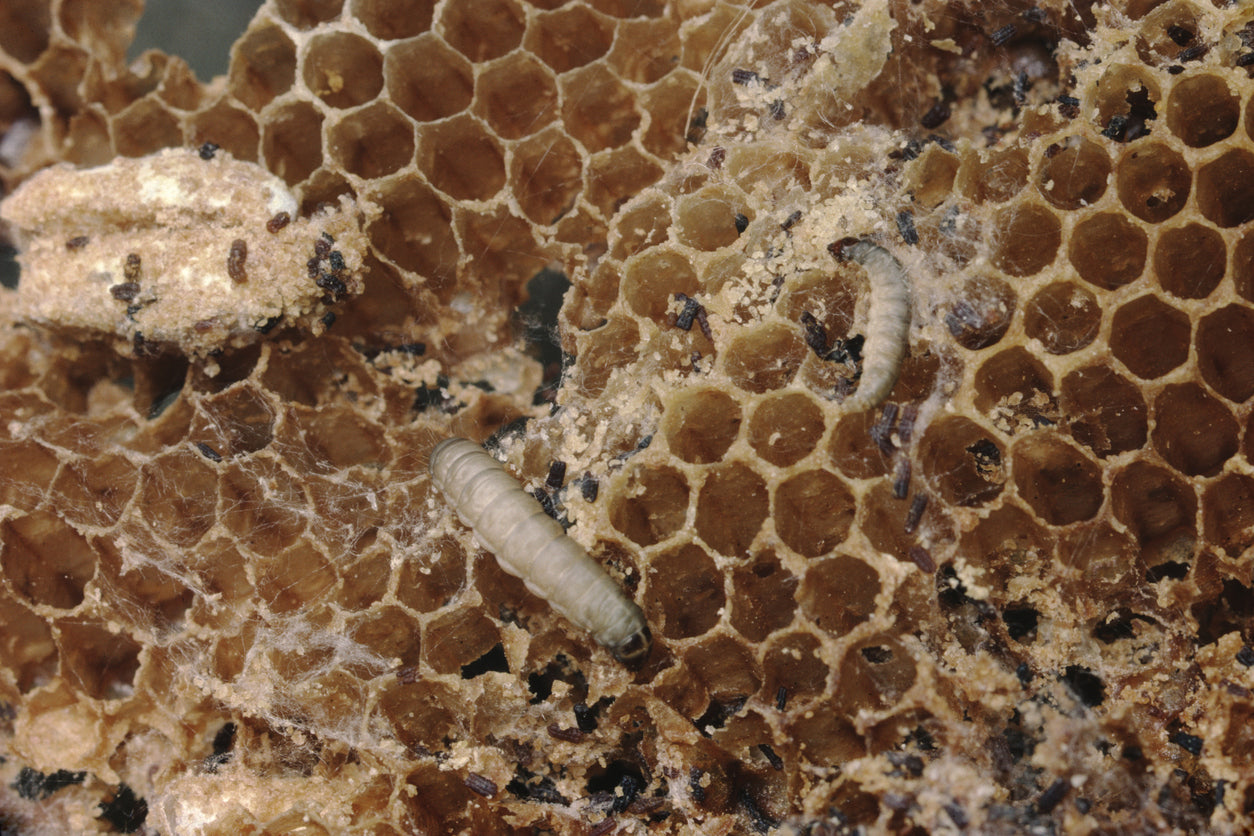Mealworms (Tenebrio molitor) are a frequent staple food for reptiles and amphibians (Dubia Roaches are a great alternative staple). They are the larval form of the darkling beetle (not to be confused with the superworm darkling beetle).
In order to provide optimal nutrition for the animals they feed, mealworms need adequate food and hydration. There also needs to be a consideration about the temperature at which to keep them, in order to prolong the amount of time they are in the larval (worm) state.
Housing
Mealworms do best in an adequately sized and ventilated enclosure. They don’t climb and are unlikely to escape but their enclosure should be covered to avoid spillage or interference by others in the household. A small number of mealworms can do well in a covered plastic cup or a 4”x6” “cricket keeper”. Larger numbers of mealworms (over 500) require an enclosure at least the size of a 5 gallon (8”x16”x12”) or 10 gallon (“20”x10”x12”) aquarium. An actual aquarium with a screen cover, or the commercially available “Faunarium” type plastic cages can serve as the enclosure. A similarly sized plastic tub with a cover will also work well. The cover of the tub will require a hole cut in it and covered with screen or mesh to provide ventilation.
Food
Mealworms burrow in bedding which doubles as their food. They require high quality food in order to provide good nutrition for the animals they feed. They are frequently sold in a bedding of wheat bran, which looks like, but is not, sawdust. For best results, mealworms should be provided with a bedding of high quality powdered grain mixture. This mixture can be purchased as chicken mash, as insect “gutload” or formulated at home by putting a variety of cereals and grains through the blender.
As the mealworms consume the food, they leave behind droppings (called frass) and shed skins. Eventually, the frass and shed skin can largely replace the powdered grain. Be sure to check the composition of the bedding frequently (the frass is finer than the grain) and add more food as needed.
Hydration
Mealworms depend on fruit and vegetables for their hydration. The most common items provided are carrots and potato. They do well with all sorts of vegetable parings including eggplant peels, broccoli stems, cabbage and cauliflower leaves. It appears that they pass on the beta carotene in orange fruits and vegetables to the animals they feed, resulting in good nutrition and coloration. Care should be taken not to use items that can rot, mold or cause the bedding to clump. Remove fruit and vegetable items once they have dried out.
Prolonging the Worm phase
Mealworms grow to about 1” in length and eventually turn into “pupae” commonly called “aliens” because of their resemblance to the aliens in some science fiction movies. These “pupae” will eventually turn into darkling beetles. Neither pupae nor beetles are preferred reptile and amphibian food, so it’s best to preserve the mealworms in their larval form for as long as possible. Note that mealworms that are ready to turn into pupae often become motionless and less attractive to the reptile or amphibian.
The higher the temperature, the faster the mealworms will grow and change. One solution is to put the mealworms in the refrigerator where they will become dormant and stop feeding and growing. If this is done, they need to be removed from the refrigerator and left at room temperature for 24 hours every week or so in order for them to revive and feed. Also, some refrigerators are kept colder than others and in some cases the mealworms will be kept at too low a temperature and die (dead mealworms turn black). For best results, monitor your refrigerated mealworms carefully, keep them in a cooler place such as a basement, or purchase smaller mealworms so there is more time for them to grow and change.




1 comment
Leslie Mayer
This info has been very helpful. Not because I want to feed my reptiles. But I actually found mealworms at my work under some of the furniture. I wasn’t sure why they were making all that sawdust which now I understand is just mealworms poop. Since I also found beetles living in the extension cord at work. Now I know we’re infested. Thanks for shedding light on this mistry for me.
Leave a comment
All comments are moderated before being published.
This site is protected by hCaptcha and the hCaptcha Privacy Policy and Terms of Service apply.